So, you prefer making your produce. Compost bins are a great idea. However, what if one day, while clearing the bin, you find a wasp mixed with compost? No need to panic; I will guide you on how to get rid of wasps in a compost bin.
Add water to the compost bin right away. You can also stick a hose into the pile. But, before doing that, cover yourself from head to toe. Then, stand at a distance and leave it for a short while.
It is better to approach wasps at night when they are less active. Pests in compost bins are usually common in hot and dry summers.
Why Do Compost Bins Attract Wasps?
It is unusual for wasps or bees to make nests in compost bins. It is not something you need to be concerned about as a home gardener. However, certain circumstances will make the compost pile more attractive to wasps. Below are a few reasons that compost bins attract wasps.
Dry Compost Pile

A dry and dusty compost pile provides a far more ideal environment for wasps to live than a moist or humid bin. During hot and dry summers, you might want to water your compost bin regularly.
Otherwise, the compost pile will attract unpleasant visitors, such as wasps. These pesky pests prefer a dry environment to make their nest. Wasps are attracted to the sweet odor of decaying fruits. Thus, they are more prone to nest in a dry compost bin. Ideally, the compost pile should be as wet as a wrung-out sponge.
Neglecting Compost Pile

You will not have a problem with wasps or bees if the compost bin is stirred or turned around regularly. Turning compost piles adds air to the compost pile. It is an essential step in decomposing the pile.
It adds oxygen, which is vital for aerobic microbes. As the material decomposes, the compost pile will naturally shrink and will make the compost bin cooler. Hence, preventing the compost pile from becoming dry can attract insects. The more you turn the compost around, it will produce more compost.
Stir it around at least once in 3 to 6 days. It will reduce the smell wafting from the bin. Plus, wasps are less likely to nest in the finished compost. Therefore, turning the pile is crucial to complete composting and for controlling odor.
Not Adding Enough Material

Also, when adding more food or substances to the pile, the chances of a wasp nest decrease significantly. Wasp nest in the compost pile when it is left untouched for days. The compost pile eventually turns dry, providing an ideal environment for wasps to grow.
Adding fresh leaves, grass clippings, or leftover vegetables and fruits will help maintain a moist environment. It also beats up the pile heap enough that wasps won’t be able to survive it. In winter, when conditions are dry, you must keep adding wet and moist food items.
Bins Without Lid

Compost bins without a lid are more likely to attract insects like wasps. If the compost bin lid is not tightly closed, the wasp and bees will surround it. The open or loose-lid compost bin will spread the smell of decaying food.
And Wasps especially love the scents of fruits and other sweet food. It would also cause the pile to turn dry and will lose all moisture. The straightforward approach is to use a compost bin with a cover.
Are Wasps In The Compost Bin Dangerous?
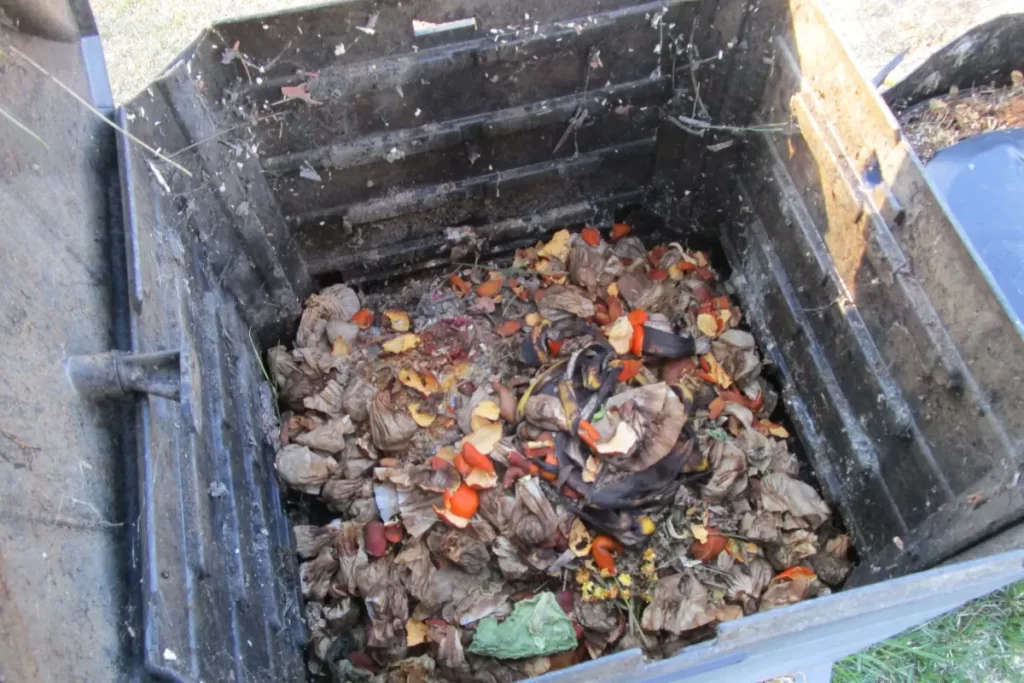
Wasps in compost bins can be dangerous. Other than destroying your compost pile, they can sting you really bad. Well, wasps are known for attacking humans for no reason.
They can target you for only opening up the compost bin. Wasp are territorial. If you move slightly within their territory, causing disturbances, they might sting you. The worst situation will be having a nest nearby.
The swarms of bees will surround you within seconds. Wasp stings are painful, and an attack will cause multiple stings within seconds. Each sting will release a venom.
Even a minuscule amount of venom will cause pain and irritation. The sting can also cause an anaphylactic reaction in people allergic to the wasp venom. The symptoms are severe itching, redness, shortness of breath, and dizziness.
Can You Put Insecticide In The Compost Bin To Kill Wasps?

No. Chemicals such as pesticides or insecticides have no place in the compost bin. They cancel the whole point of your organic compost preparation. So, throw away all the compost bin material if you have sprayed pesticide.
Some of these wasp chemicals, pesticides, or insecticide does not affect humans and will turn the wasp into an organic product. Still, I don’t think you want a dead wasp and chemicals to grow your plants.
When food in a compost bin is decomposing, it reduces in size. If pesticides remain on them, they get super concentrated when compost is ready. Additionally, these chemicals might also kill the beneficial organisms in your compost pile. Hence, all your efforts were in vain.
So, when you see a wasp in the compost bin, try removing it manually. Never go for shortcuts like using chemicals. It can cause more problems instead of an easy way out.
What Kind Of Wasps Live In Compost Bin?
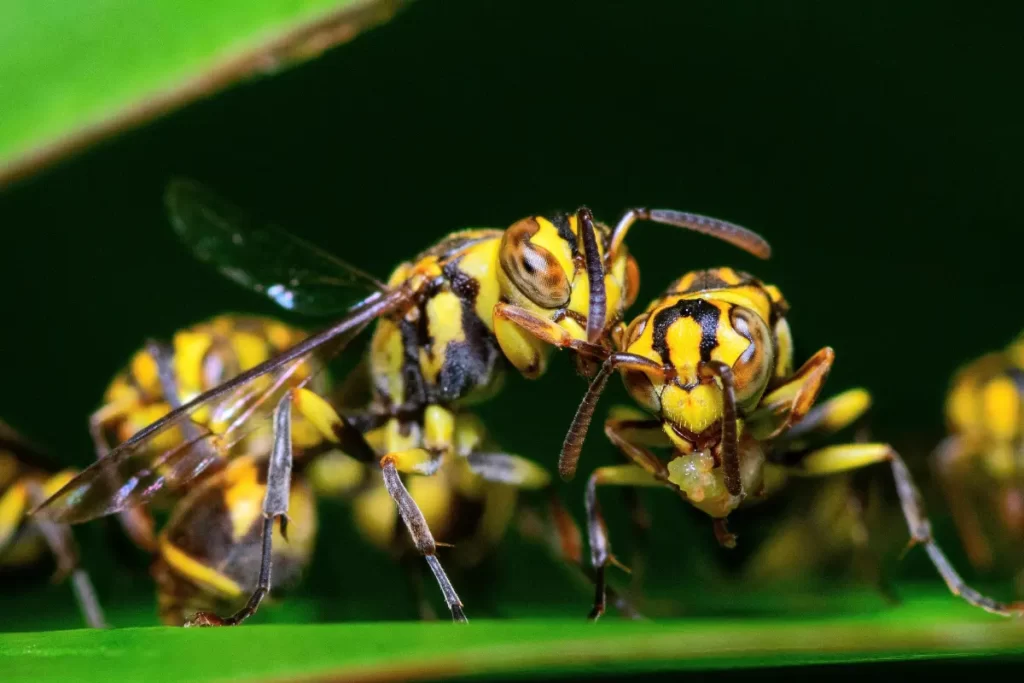
Swarming bees make a home in the most unusual places. People find it amusing to see wasps coming in and out of compost bins. They are the common insects found hidden under the compost bin lid. The compost pile provides these stinging bees a hidden place with plenty of food.
The dry compost makes a perfect place for some wasps to nest. There are many species of wasp, almost in thousands. Each species has its different ways of nesting and living. Some prefer to nest high up in trees, while others are underground. So, to find more details on what kind of wasps live inside compost piles, continue reading.
Southern Yellow Jacket
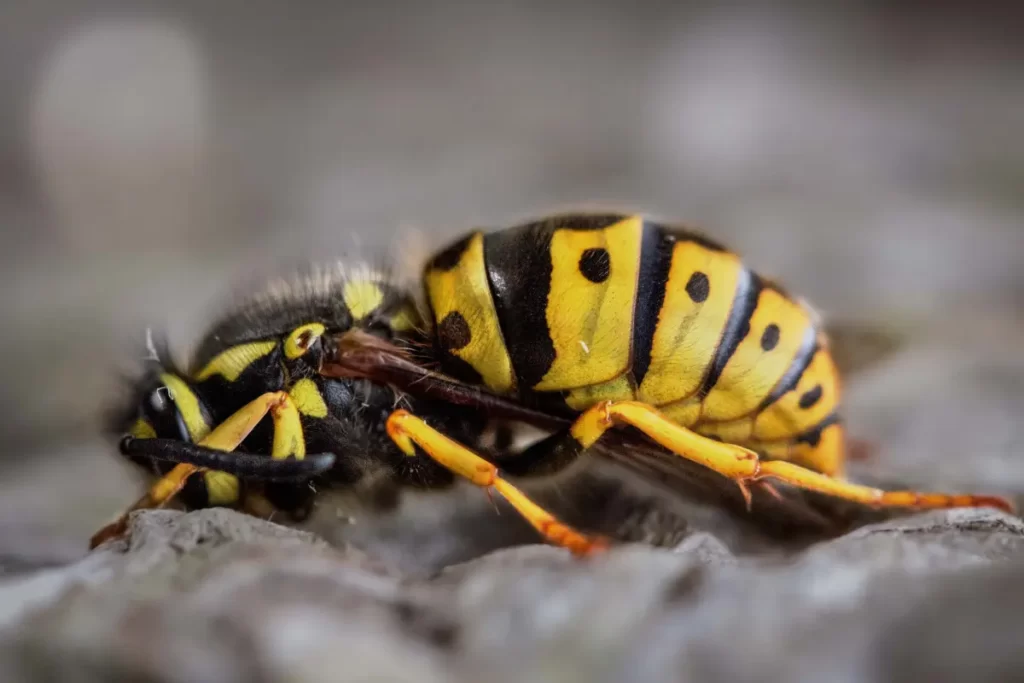
The southern yellow jacket queen stays in hibernation during winter. It comes out during early spring to build a nest. The queen has an orange body. And it is larger in size than all the other working wasps.
A typical southern yellow jacket wasp is black with yellow stripes on its head, thorax, and abdomen. Adult wasp feeds on nectar, and larvae survive on small insects. They typically find their way inside compost piles when searching for food. The sweet-smelling food scrapes or dead flower bouquets are ideal for them to get nutrients.
The compost bins hide them from predators and provide enough material to make a nest.
Mud Dauber
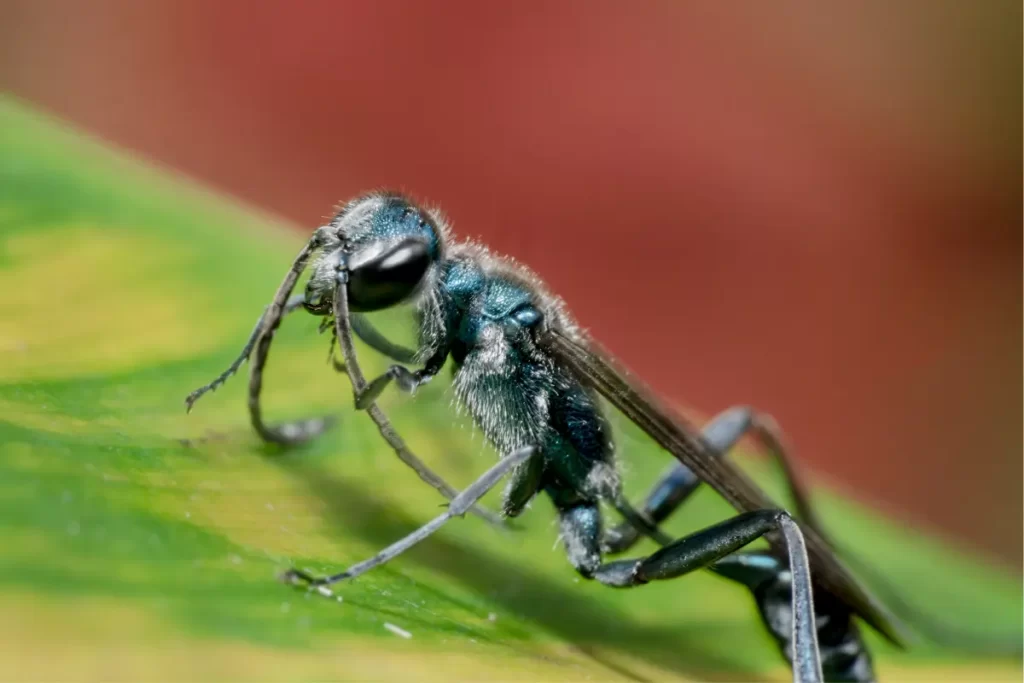
Mud dauber are known for their nest. They make their nest using sand and clay. And mold them into small cylinders. It is easier to deal with mud daubers than any other wasp species.
They use their stringers only to kill spiders or to suck nectar from fruits or trees. However, finding them inside the compost pile is bothersome. They are one inch long and have black or dark blue metallic sheen bodies.
You can also spot transparent wings. Mud daubers come out during late spring or early summer. They will gather around the comps pile food or nesting materials search. If they find all the basic life necessities, they might settle in the compost heap.
Cuckoo Wasp
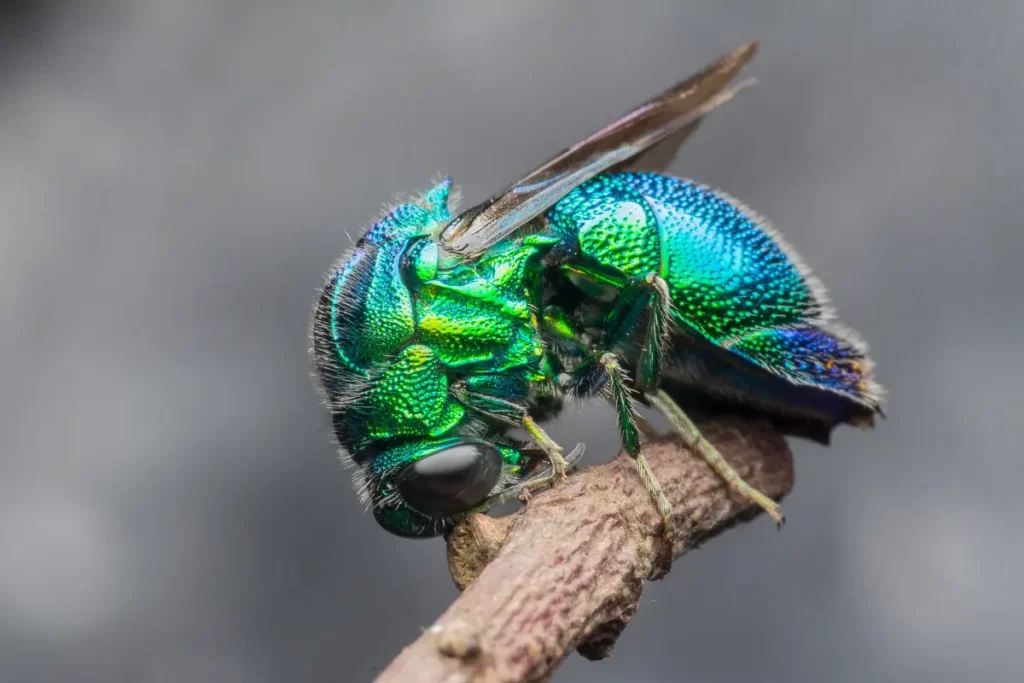
Cuckoo wasps are solitary and tiny wasps. They are a maximum of 1.2 cm or 0.5 inches long, usually black or shiny green. The flexible abdomen allows them to bend or curl when predators attack them. They are common garden wasps.
And feeds on nectar from flowers and fruits. Leftover sweet-smelling fruits and food attract them to your compost pile. After finding it suitable, they might nest inside the compost or nearby. Surprisingly, some cuckoo wasp species don’t make their own nest. Instead, they take over the mud dauber wasp nest.
The female cuckoo wasp will lay eggs next to the mud dauber eggs. So when their egg hatch first, the larvae can feed on the food of the host larvae. Hence, one wasp species in a compost bin can attract the other.
Northern Paper Wasp
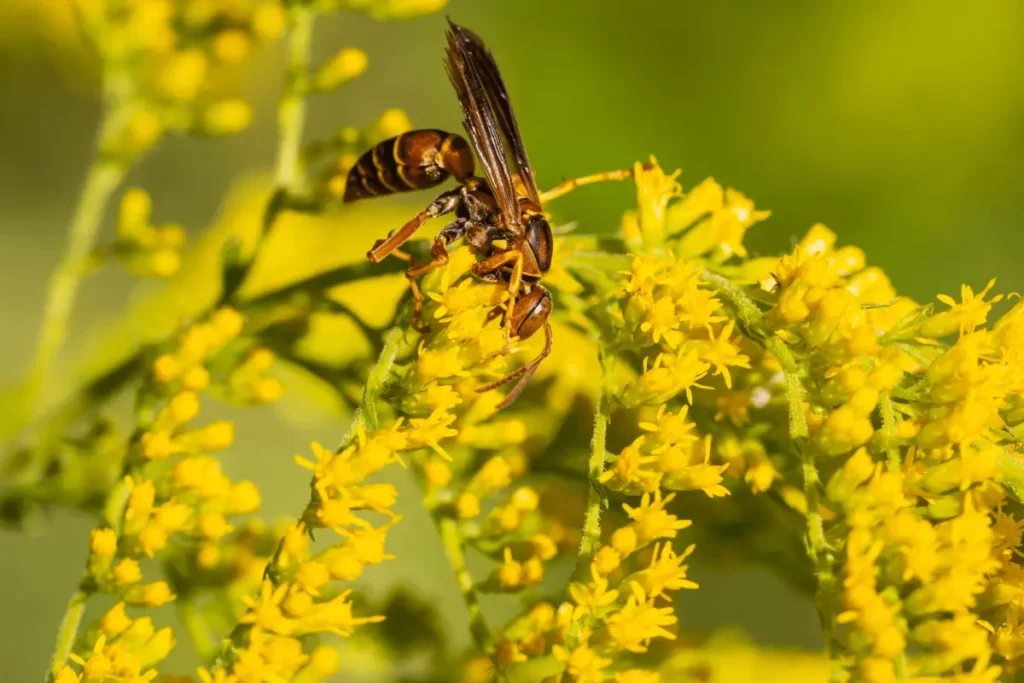
The Northern paper wasp nest grows more quickly than any other wasp nest. Wasps have a slender body with a thin waist. Their body is reddish brown with yellow bands on it. Male wasps are less likely to attack you than female wasps.
Also, female wasps release venom on their sting, which can be very painful. You can identify a male wasp with the curved tip of the antenna and more yellow bands on the body. Although they are omnivorous and feed on insects, they might still take over your compost bin to build a nest.
Their life cycle includes first-generation worker interfile females. The second and third are fertile females or queens. Dry, dehydrated, and neglected compost piles are ideal for living.
Eastern Cicada Killer
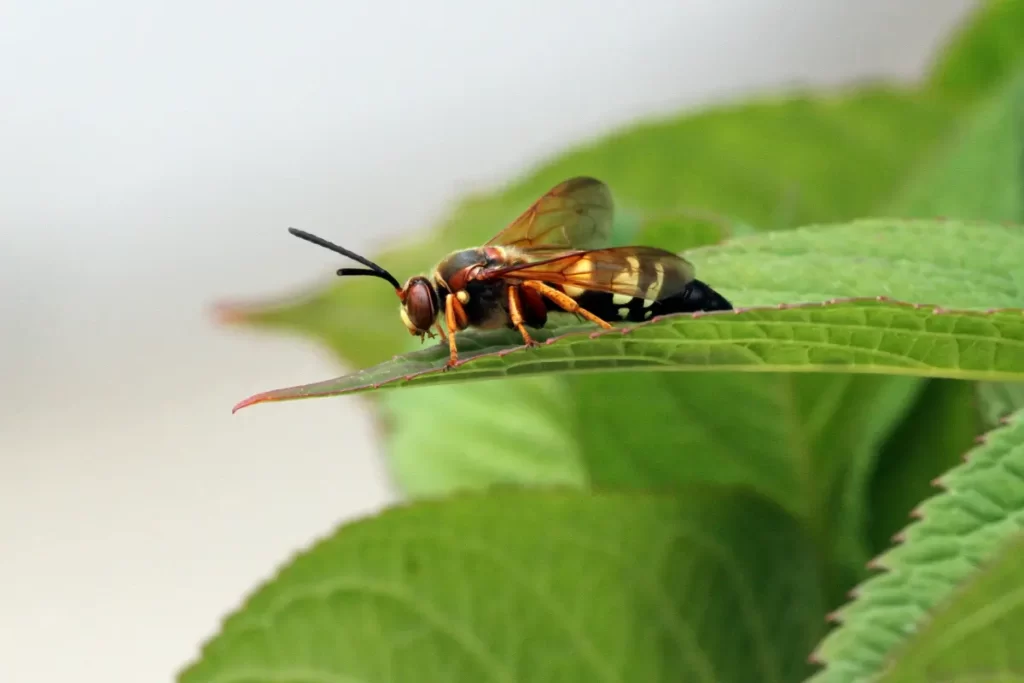
Female Eastern cicada killer wasps are active during summers, building an underground nest and filling it up with cicadas that will be food for their larvae. They build nests underground inside flower beds, shrubs, tree roots, or compost bins.
The cicada killer wasps range in size from 1.25 to 2 inches. They are enormous wasps with transparent wings and black and yellow stripes on their body.
Male wasps are smaller than the female wasp. Also, male wasps are territorial and lack stringers. Cicada killer wasps are harmless unless provoked. Therefore, they won’t hurt you until you try to throw them out of your compost.
How To Get Rid Of Wasps In A Compost Bin
Wasps will make their nest in the most unbelievable places. You might have never imagined finding a wasp inside a compost bin. But they are always ready to surprise you. It also includes sudden attacks out of nowhere. So, you plan to go Green and produce your compost.
So, after a long day, you throw all the food scraps in a compost bin. The next day, when you went to check it out and find wasps swarming around it, it was still pretty cold outside. You might feel like throwing away the entire thing. Stop! I can help you find ways to remove this pesky pest from the compost bin.
Protecting Yourself
Cover yourself with protective clothing before attacking the wasps. This way, you can protect yourself from a stinging body. Wear a full-sleeved thick shirt and long pants. Also, cover your face with a face mask, and don’t forget to wear safety goggles.
Trust me, wasp stings are no joke. You can wear a thick hoodie to cover your hair or wear a woolen cap. You have to ensure that no part of your body is visible. There should be no gaps in clothing so any wasp can squeeze inside.
Locate The Wasp
Wait for the night to remove the wasp from the compost bin. At night, wasps are less active. So, carefully approach the compost bin and try to locate the nest. It is better to use a long stick instead of putting your hand through the compost.
Stand at a ten feet distance to be safe. Delicately move the wooden stick through the compost heap. When you come across the wasp nest, don’t poke it. Never knock or bang the wasp nest. You will awaken all the wasps, and they will attack you within seconds.
Get Rid Of Them
If you find the nest, take a large plastic bin bag and carefully put the nest inside it. Seal it immediately. Throw it away far from your house. However, you have to be very calm and steady during the process. If you don’t have a nest, just a few wasps hanging around, the vacuum cleaner will be handy.
Move the vacuum cleaner around wasp-hiding spaces, and they are gone. Another easy trick is to pour hot boiling water over the compost. It will not only kill the wasp but will also moisten the compost. But dead wasps will combine with the compost heap.
Conclusion
Making your own compost is an excellent way of using all your leftovers and garbage. However, it sounds all easy until insects like wasps try to live inside the compost heap. The dry, neglected compost heap is an ideal nesting place for many wasp species. It provides them with shelter and food.
The main attraction that draws them towards compost piles is sweet food scraps like fruits. So, if you plan to remove wasps from the compost pile, you will only need a vacuum and water. It is preferable to avoid pesticides or insecticides on your compost heap.

